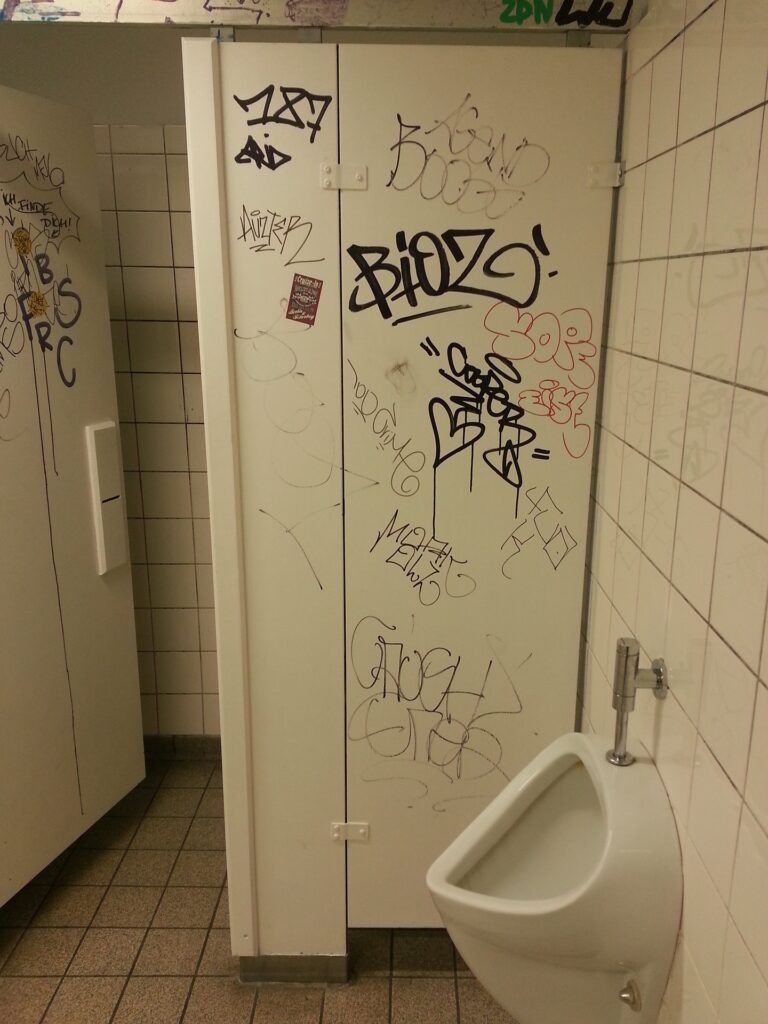And why is it important for us to understand as teachers?

The debate about our education system is raging all the time. That is not a surprise. Teachers have a strong influence on a child’s life. After all, during their school time, students spend up to a third of their day in school. We, teachers, need to understand which are the forces that shape our education system. Both in a positive and negative way. And we also need to understand which role we as current or future teachers play.
For the purpose of this article, I will frequently refer to Germany and Denmark. I will use them as examples of modern, western education systems. This is because these are the education systems, I am most familiar with.
Important Questions to Ponder Upon as Teachers
Because education plays such a major role in our lives, most of us have opinions about it. Teachers are no exception. But we should ask ourselves the following questions as an exercise.
- As a teacher, what are the ideal conditions for you to teach?
- If you were a student, what would be the ideal conditions for you to learn?
- As a parent, which are the ideal conditions for your child to thrive and learn?
- If you were the minister of education, what do you think the ideal education system should look like?
Try and take notes on each question. Compare. Do the expectations from each point of view match up 100%? Chances are that they don’t. That is one of the forces that shape our education system. Education is a dialectic process. There are many actors involved. And all have different expectations of the system. For the most part, the current system we have is simply a result of trying to align those expectations. But that is not all.
History and Traditions Are Some of the Forces That Shape Our Education System
The concept of a public school system for educating the masses is a new one. At least if you look at it on the scale of human history. Most public school systems have only been in existence for a bit over 200 years. One of the early examples are the danish “Rytterskoler“, and the Prussian Schools. Their structures still form the basis of many western school systems.
For most of human history, however, education mostly took place in informal contexts. Or it was only reserved for the elite.
There are some examples of school systems in ancient times. For instance Plato’s Academy and the Spartan Polis. The former focused on debate, and reflection. The latter had another focus. To teach children the virtues of military discipline and skills.
Actually, core content of modern, western curriculums traces back to the Greeks and Romans. They formalized the idea of the 7 liberal arts. The Romans subdivided them into the Trivium and the Quadrivium.
Trivium:
General Grammar
Answers the question of the “Who, What, Where, and the When” of a subject.
Formal Logic
Answers the “Why” of a subject.
Classical Rhetoric
Provides the “How” of a subject.
Quadrivium:
Arithmetic
The ‘study of numbers, and quantities.
Geometry
The study of numbers in physical space
Music
The study of numbers in time. It is the applied theory of numbers. Also the study of relations between quantities.
Astronomy
The study of numbers in space and time.
These 7 liberal arts still form the basis of nearly all western school curriculums.
Education usually reflected the needs of the communities, in which it took place. For most of human history, formal education was only accessible to the elite. Wealthy families would hire (or enslave) private tutors. They would teach the children to read, write, and do arithmetics.
For the rest of the population, the situation was different. Fundamental skills were passed down from generation to generation. How to hunt, how to take care of a farm, etc. This has been the case since the early hunter-gatherer societies. The methods are also very similar to what we see in modern education. Learning by doing, Storytelling, and Songs, are some examples. The “curriculums” always served to perpetuate existing gender and social structures.
The Desire to Preserve Existing Power Structures Is Also One of the Forces That Shape Our Education System
During medieval times, formal education was firmly in the hands of the church. Priests and Monks were guardians of knowledge. It also meant that the church had the privilege to decide what students should learn. Therefore, religious themes and bible studies formed the backbone of formal education. Private tutors were usually recruited from the clergy.
Even in the early public school systems, the main focus was to study Christian teachings. This was the case in the aforementioned Rytterskoler
These influences persist in modern education systems, even in secularized states.
Take a look at the curriculum for Christian studies in Denmark. It is a compulsory subject for students of all ages. Other religions do have a minor place in the curriculum. But the emphasis is very clearly on Christianity as the main theme. The curriculum is therefore not secularized.
The Prussian Schools emphasized building the national spirit and learning patriotic values. Another important aspect was to teach obedience and subservience to children. This is also still reflected in many modern school systems.
Obedient, and subservient workers were also, what capitalists need for their mass-production facilities. This is also the reason, why school starts between 7 and 8 in the morning. That coincides with the working hours in the factories. This is unlikely to change. Even though we have evidence that shows the benefits of starting school later in the day
A further feature of the Prussian schools was to foster elite students. The first 8 years of school were free. After that, education had to be paid for. Only students from wealthy families had a real shot at studying at university. Most countries adopted this model.
Segregating student bodies is still very prevalent in Germany. Students are usually segregated after primary school (usually around grades 4 – 6). The secondary school system is quite inflexible. It leaves little room for upward mobility.
Ideology Is One of the Forces That Shape Our Education System
These historical forces do not provide the full picture, however. There are also other forces, which are not always visible. In general, education is an important pillar for preserving society. According to Karl Marx, the education system is part of the ideological superstructure. Through education, we create narratives, that preserve the existing order.
We already discussed the example of Christian teaching. Another example is the difficulty in history curriculums to address past transgressions. Among these are slavery, human rights violations, and illegal military campaigns.
However, this is one of the forces, on which we as teachers can make a direct impact. This comes at a cost. Education is often an ideological battleground. We can see that in the U.S. right now.
There Are Also Structural Forces at Play
Last, but not least there are also numerous structural forces to consider. There is the issue of underfunded schools. The pandemic revealed, how far German schools have fallen behind in digitalization. In Denmark, where the digital infrastructure is in place, teachers lack adequate training. Delivering high-quality lessons with digital tools is not an easy challenge.

Also, the pressure to compete has infiltrated every layer of society. The PISA studies are an example of that. Most countries reacted to the first PISA results by introducing rigorous standardized testing. They have had little effect. But they increased the pressure on teachers to perform Teaching to the test. This has lowered the overall quality of education.
A very important structural issue is the quality of teachers and didactic methods. Almost all western countries experience severe teacher shortages. But there is also little extra training for existing teachers. This is in spite of the fact that the field of educational research picking up speed. We know what works and what doesn’t work.
But that knowledge rarely enters our education system. If it does, it is only in small doses. We also know, how teachers can best support neurodiverse students in the classroom. But often, the structures do not allow teachers to provide necessary accommodations.
Last, but not least, there is a lack of flexibility. We know that not every student learns the same. But the fundamental structures that deliver education have not changed. Not since they were first introduced more than 200 years ago.
Among the Forces That Shape Our Education System Is a Rapidly Changing Society
When I studied to become a teacher, Social Media did not exist. Now they are an integral part of my student’s life. We know about the negative impacts of social media on teenagers.
But they are here to stay. The effect they have on my students is also shaping my lessons. The task for us as teachers is to find out how to counteract these negative effects. And to teach children to navigate a changing media landscape.
There are also other external factors. Such as a rapidly developing climate crisis. This will demand an appropriate response from schools. Whether they want it or not. The pandemic made one thing very clear. External shocks can easily disrupt our education system. Teachers scrambled for solutions to circumvent school lockdowns. Some succeeded more than others. But it is clear, that online learning as a concept is here to stay.
The internet not only led to a spread of information. It is also shaping education. Most Universities now offer online lessons. Often in modules, so people can start to design their own education. And then there are the plethora of course platforms such as Skillshare. They put the individual in the driver’s seat of their education. The result is, that the path to an education is not as straightforward as it used to be.
Education systems will also adapt to this change in society. Albeit slower than we would like.
The Most Exciting Time to Be a Teacher
There are many forces that shape our education system. History. Tradition. Structures. A changing society. Right now, they are converging. The resulting clashes will create a big revolution.
It might be the biggest revolution in our education systems ever.
There will be many ideological battlegrounds. And nobody can say for sure, what the outcome will be. But there is little doubt, that we as teachers play a decisive role in this process. We are the dots that connect it all.
This is a big responsibility to shoulder. And the reward for us as individuals is often meager. Our societies undervalue and underpay teachers. But in exchange, we do have the power to plant the seeds for the future of human civilization. Few professionals can lay that claim for themselves.




